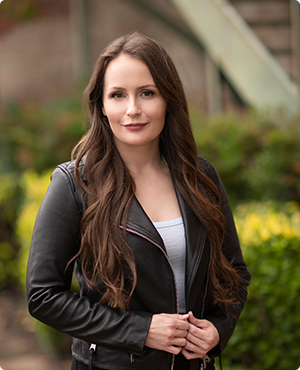Addiction Treatment
Starting Over: Creating Your Personal Relapse Prevention Plan

Written By:

Table of Contents
Making a complete list of all your addiction triggers is just one part of making an individual relapse prevention plan. If you’re in a 12-Step program, start by revisiting your self-inventory from Step 4. Highlight the factors that had the biggest influence on your turning to—and staying in—substance abuse.
Asking Questions When Building a Relapse Prevention Plan
When doing a personal trigger evaluation, consider the following questions:
- In what situations did you regularly use addictive substances? (Watching evening television, when tired and desperate to keep going, on dinner dates?)
- What were your emotions before and during using? (Boredom, anger, anxiety?)
- What will you do in the future to avoid your typical trigger situations? (Join a book group to replace TV time, take a hiatus from dating, avoid restaurants?)
- If the situation can’t be avoided completely (say, you always took a pill to get to sleep at night), what will you do to minimize its “trigger impact”? (Practice relaxation techniques to improve sleep, eliminate evening busyness?)
If you have already had a relapse, and especially if you have had more than one, ask these same questions regarding those periods.
Check your trigger list with an accountability partner and/or someone who knew your past habits. Ask them to hold you to your plan for relapse prevention.
That’s not all. To minimize relapse risks, you need to know your “vulnerability temperament” and cultivate the habit of watching your weakest areas in all of life.
Common Personality Traits of Addicts
Which of the following sounds like you? Implement the corresponding resistance-building tips into your relapse prevention plan.
The Perfectionist
Description: Perfectionists are driven by pride and by fear of inadequacy. They set impossible standards for themselves, berate themselves for failing to meet those standards, and get angry with anything that impedes their striving. They are impatient and irritable when working, moody, and “blah” when they finally stop to rest. Typically, they are the last addicts to admit to a problem and so violate the idea “I can and should fix everything myself.”
Why They Start Using: To keep themselves going when their bodies object to the physical demands of keeping up impossible standards and schedules. To satisfy “I deserve some reward for all this hard work” thinking.
Typical Relapse Factors: Stress, frustration, a sense of overload. Seeking instant-gratification rewards for successes. “I’m fine now” thinking that leads to neglect of recovery support and to a reluctance to confess temptations.
Building Relapse Resistance: Admit—regularly, to yourself and to others—that you have limits. Limit each day’s to-do list to a maximum of three major tasks. Block off time to relax. Above all, keep your human support network active. Listen to others and get their input on your goals and struggles.
The People Pleaser
Description: People Pleasers find it impossible to say “no.” When they disagree with others, they swallow their urge to speak up, because they lack self-confidence and credit everyone else with being smarter. They are “born followers” who are quick to shift blame for their actions to someone else’s idea or orders. Although frequently praised as those who “can always be counted on,” they pay for it with the stress of inner resentment.
Why They Start Using: Peer pressure. Seeking of non-confrontational coping methods for stress and resentment. Reluctance to raise questions about potentially addictive prescriptions for stress-induced pain.
Typical Relapse Factors: Meeting old “user” friends. Reluctance to speak up about an obvious trigger situation (such as being invited to dinner in the restaurant where one always had wine). Feeling pressured to return to one’s old dependable self.
Building Relapse Resistance: Cut all contacts with anyone who still uses. Delete all possible trigger people from your phone, e-mail address box, and social media lists. For those who remain in your life, make it clear they are not to urge you, even low-key, to “have just one drink.” Enlist a supportive party to play the heavy so you can say when needed, “I’ll have to check with my husband/mother/best friend who may already have plans for that day.”
The Powerless Pessimist
Description: This may be the stereotypical inner-city kid who turns to drugs as an escape because he sees only poverty and hopelessness wherever he looks. But it may also be the middle-class WASP kid whose parents regularly tell him “you’ll never amount to anything”; the executive VP who really wanted to be a hair stylist but couldn’t bear to disappoint her family; the former jock whose chance of an athletic scholarship was shattered by a major injury; or even the average Joe who grew up on bad-news broadcasts and violent TV dramas. What they all share is a feeling that they’re trapped in a life nothing like the one they want, and that there’s nothing they can do about it.
Why They Start Using: Desperation to escape the hopelessness that pervades their lives.
Typical Relapse Factors: Hitting a setback just when life finally seemed to be going somewhere. Renewed contact with family members and “friends” who reinforce the old “you’re nobody” way of thinking.
Building Relapse Resistance: Get lots of support. Cut off contact with anyone who’s emotionally abusive (even if it’s your mother, even if you have to quit your job). Take a personality test (Myers-Briggs is highly recommended), and look again at your old dreams (the Step Four inventory can help here as well) as you start planning goals for the future. Learn the art of making goals well-defined and challenging-yet-reasonable. Celebrate even small steps forward.
The Perpetually Piled-up
Description: These are the people who can’t miss one section of a revolving door without throwing off their schedules for the rest of the week. They are frequently dangerous to others (and not exactly safe to themselves) as their sense of perpetual urgency manifests itself in dodging through traffic, shoving their way along the train platform, and having no time to help where needed. For all their busyness, they have seriously deficient time-management skills; they take pride in never missing a meeting nor leaving a message in the e-mailbox overnight, while indefinitely neglecting more-important-but-less-urgent things.
Why They Start Using: Stress. Turning to artificial stimulants to stay awake or keep up the pace. Inability to sleep without chemical aid in relaxing.
Typical Relapse Factors: Wanting to get back to “the way life was before addiction” without realizing how the old life helped create the addiction to begin with. Being habituated to always taking care of the most urgent thing.
Building Relapse Resistance: Make a thorough study of good time management and its role in building an effective life. (Read The 7 Habits of Highly Effective People, The Purpose-Driven Life, and Greg McKeown’s 2014 title Essentialism.) Engage strong support and accountability when committing to new habits. Hire an experienced life coach for extra guidance and accountability. Cut ties with anyone who tries to pressure you back into the old pace. Change jobs if the old one enabled your old style.
The Physically Perfunctory
Description: “Perfunctory” means “halfhearted and careless,” and that’s how this type is about their physical health. They live on grab-and-go carry-out food (from Krispy Kreme on the way to work to McDonald’s on the way home), rarely exercise, and leave physical checkups in the “when I get around to it” file. They might also be called “The Walking Ill,” for they develop dangerous health issues (high blood pressure, prediabetes, even malignant tumors) long before day-to-day functioning is visibly affected. As their physical fitness shrinks away, so does their mental ability to resist temptation.
Why They Start Using: The desire for a quick fix to daytime drowsiness, nighttime restlessness, or physical pain. Too many fat- and sugar-heavy foods, which get the body into the habit of indulging cravings.
Typical Relapse Factors: Indulging in a “slightly addictive” substance such as a high-caffeine latte. The influence of old habits. Overdependence on legitimate medications.
Building Relapse Resistance: Schedule a long talk with a doctor or doctors who know wellness, nutrition, and sobriety. Make sure to get solid lifestyle recommendations and to schedule a follow-up checkup. Set up an accountability network (exercise partners, family for regular meals together, and formal support groups, as well as doctors) to help you stick to new habits. Eliminate all the “hurry pressure” you can. Bring your own food to coffee-and-doughnut meetings.
The Psychiatrist’s Patient
Description: No insult intended here; mental illness, like diabetes or quadriplegia, is something many people have to learn to live with, and that when properly managed needn’t keep anyone from being a contributing member of society. Around one in four or five Americans has some level of diagnosable mental illness; with substance abusers, the percentage leaps above one in three. Although it’s not always clear how these two “fronts” of the brain-management battle collaborate, people with pre-existing mental conditions are definitely in a high-risk category for substance abuse and relapse.
Why They Start Using: Attempts to self-medicate mental-health-related problems. Impaired judgment in “social using” situations. Shame over the mental-health issue.
Typical Relapse Factors: Neglect of proper treatment for the mental-health issue. Social stigma that ignores or belittles the struggles surrounding mental illness.
Building Relapse Resistance: If not previously diagnosed with mental illness, everyone in addiction recovery should have a formal psychiatric evaluation to determine whether mental-health treatment should be part of the long-term program. If you do have a mental illness: Keep up regular appointments with an understanding medical doctor and a therapist. Understand (and help your support network understand) your particular illness and how to cope with it. Never make on-your-own decisions about quitting psychiatric medication; if you have doubts about continuing, talk to your doctor. Join a mental-health advocacy-and-support group.*
The Importance of Creating a Personal Plan to Prevent Relapse
Finally, the points that can’t be stressed enough for any former substance abuser:
- Don’t think “it can’t happen to me.” Know your limits and stay clear of tempting situations and relationships.
- Don’t try to go it alone. Get your friends and family to back you up. Attend support groups regularly.
- Value yourself! You are a unique, irreplaceable human being, with all the attendant blessings and challenges. Rejoice in every opportunity to be the best you that you can be.
Relapse prevention therapy is a big part of our addiction therapy services at The Last Resort Recovery. To learn more about our addiction treatment options, call The Last Resort Recovery today.
